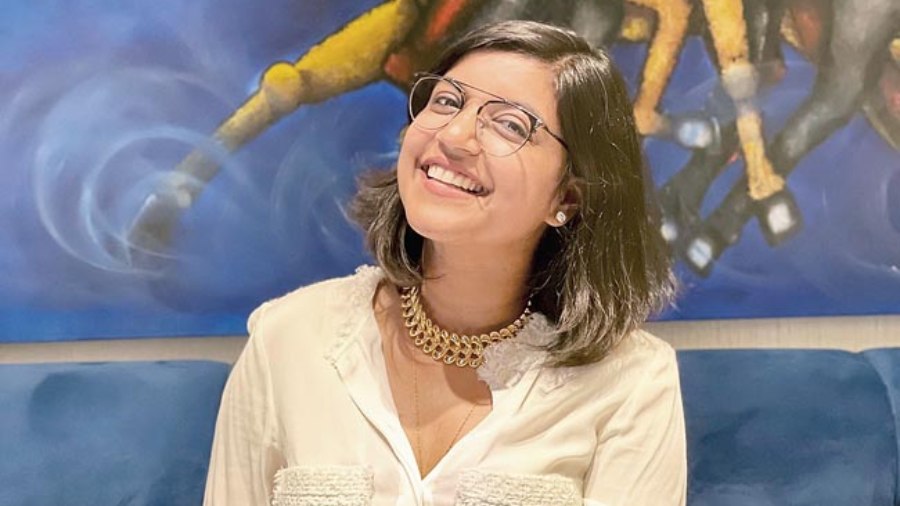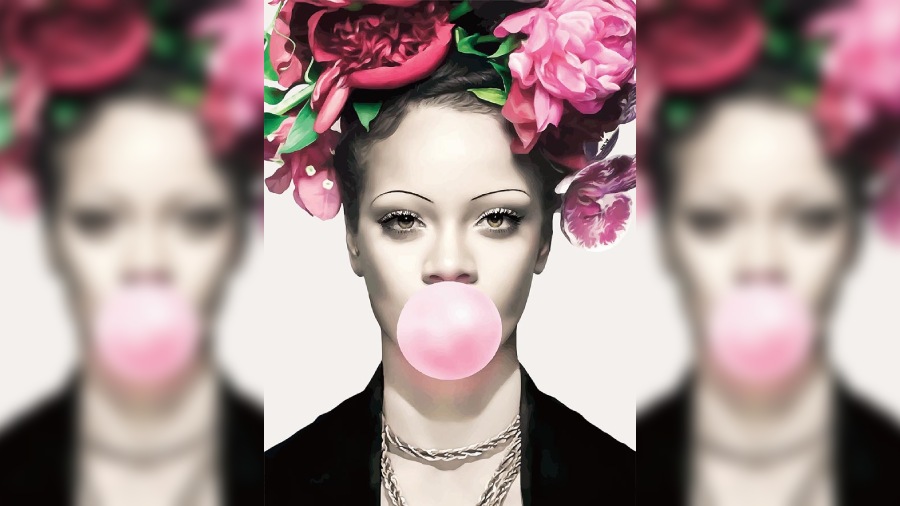At first glance, Vidushie Shriya Kandoi’s art is what you would call “pop art”. However, on closer inspection, you discover layers to it. Therefore, when she mentions names such as Salvador Dali and Andy Warhol as inspirations, one is not surprised. An architect by qualification, Vidushie’s calling to art was more out of passion. However, that translated into a professional pull when her art generated interest on social media. Since then, Vidushie has done multiple commercial projects — including the commissioned artwork at Saz American Brasserie in the city. Here’s her story.
How would you describe your style of art?
In a nutshell, I would describe my work as quirky, surrealist and pop, evoking my greatest inspirations: Salvador Dali and Andy Warhol. Each painting is a marriage of digital art and hand-painted/hand-crafted elements, such as my signature handcrafted frames, which allows me to use a variety of forms and techniques to truly create something extraordinary. In my opinion, art is deeply personal, which is why I specialise in commissions — I like to ensure that every piece of art contains as much of my client as it does of me. Being a self-taught artist has also helped shape my unique style.
I am a qualified architect, and I find myself approaching an art piece the same way I would a blueprint. For all that my artwork is chaotic and riotous, it is also very symmetrical (or symmetrically asymmetric), structured, harmonious and balanced in its bones. But once pen is lowered to paper, and I start to draw, I am guided foremost by the artwork itself... it just flows, lightly and freely.
Lastly, and befitting a mixed-media artist, all my work has layers, and I mean that both literally and figuratively. Art fascinates me precisely because of its multiplicity of meaning.

Given your experience of making art for commercial spaces, what are its challenges and benefits?
Commercial art clients have restrictions (such as colour palettes and aesthetics dictated by interior designers or franchises, or tighter budgets) that residential clients don’t have, which pose a challenge for an artist. I enjoy the challenge, however. Commercial projects often allow me greater freedom to be completely unconventional, and to really go big or go home. Art created for commercial spaces can take risks that individuals are often reluctant to take in their homes, at much greater sizes than residential pieces. Take for example the artwork I created for Saz American Brasserie — four eclectic pop art interpretations of popular media figures, each measuring 8.5ft X a bit over 6ft. I’d be hard-pressed to find a residential client who could fit those in their homes! Besides, the show-person in me delights in the idea of a wider audience. Art is meant to be seen and commercial projects allow me to display my art to many more viewers than residential projects would.
What led you to your artistic journey?
I’ve been an artist ever since I could grasp my crayons properly. I’ve studied and worked in five cities across three countries/continents, in roles spanning four (related) fields — architecture, interiors, graphic design and digital media. But what has always been constant in my life is art. I am my happiest and most fulfilled when I am creating, which made this an inevitable career progression for myself.
My professional journey, however, began when, a few years ago, still a hobbyist, I put some of my artwork up on social media in order to share it with the world. Someone contacted me, wishing to buy one of my paintings for his living room. When I told him it was too small for his space, he commissioned a much larger one in a similar style. Upon delivery, he liked it so much, he commissioned another. I realised then that my art had the ability to strike a chord in someone else, evoke the emotions that I had been experiencing when I created it, allow for mutual discovery and dialogue through a piece of canvas. And since then, there was no looking back.

Vidushie Shriya Kandoi
According to you, what are the biggest challenges of being an artist in the post-pandemic world where everything is available at the click of a button?
To be honest, I believe that being an artist in the pandemic world was significantly harder. I felt my creativity dry up during the two long pandemic years, due to the inertia and frustration we all felt sitting at home, the melancholy and grief of loss, battered every day with the sights and sounds of suffering and anguish. Post-pandemic, I feel like I have a new lease on life, creatively speaking. Two years of sorrow have left my clients itching to find a way to release their stresses, and engage in expression of their self-reflection. Art, the search for and consumption of it, is cathartic. It is an experience, not a consumption good, and cannot be easily substituted.
Perhaps the only material difference I can think of is that in a pandemic and post-pandemic world, artists have to rely greatly on social media and online platforms to get their work out there. But attendance at art shows and exhibitions is rebounding.
While people have become used to instant gratification, art stands separate, in my opinion. It is something you buy to nourish your soul, rather than your body, and people are willing to wait and engage with the process. This has been borne out by my experience — I find my clients opting more and more for custom projects that take much longer to fulfil, than purchasing a piece of art from an existing collection of mine. Though of course, having the latter helps, for those clients who just have to have it now!
Pictures: Courtesy of Vidushie Shriya Kandoi
